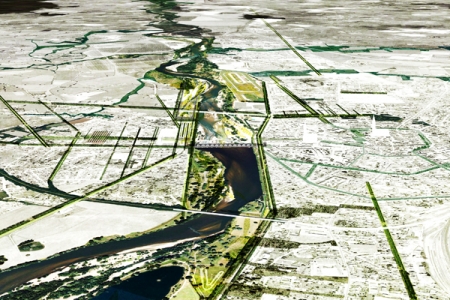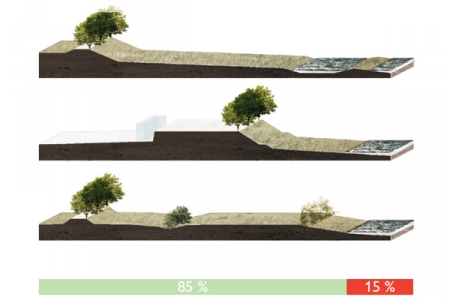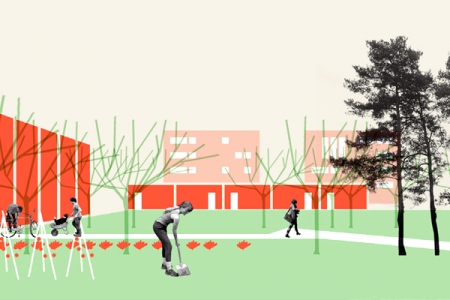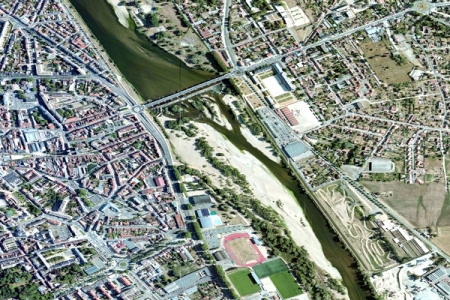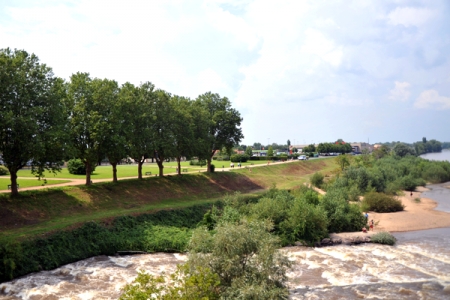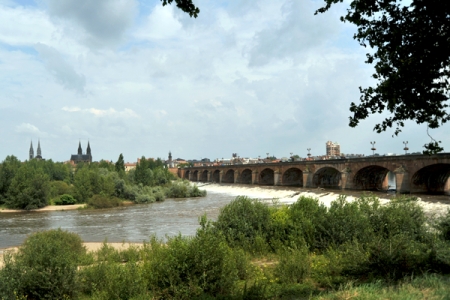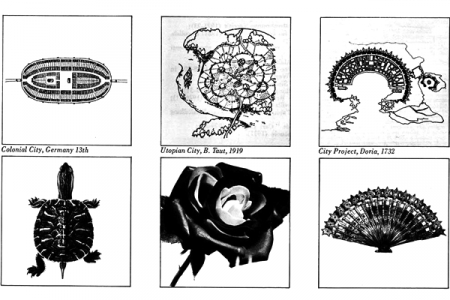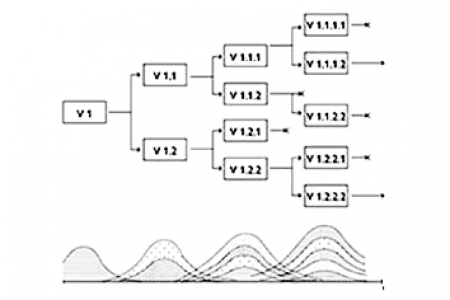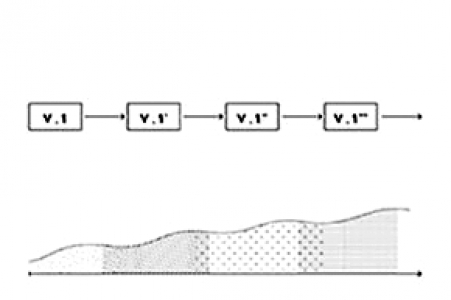La théorie de l'évolution
Moulins (FR) – Winner
TEAM DATA
Team Representative: Benoît Barnoud (FR) – architect landscaper; Associates: Clara Loukkal (FR) – urban planner geographer landscaper
LAND, 28 rue du Canal, 93200 Saint-Denis – France
+33 6 83 37 46 12 – land.paysage@gmail.com
See the complete listing of portraits here
See the site page here

B. Barnoud & C. Loukkal
INTERVIEW
Click on the images to enlarge
1. How did you form the team for the competition?
Our complementary visions of urban planning and architecture –with landscape as a common denominator– have allowed us thinking about urban issues through many disciplines. After several collaborations, the place studied in Moulins seemed to us like a good site to apprehend together town planning through landscape architecture.
2. How do you define the main issue of your project, and how did you answer on this session main topic: Adaptability through Self-Organization, Sharing and/or Project (Process)?
A town is a living and constantly evolving structure. We did not mean to understand what the transformations to come will be, but how they may happen. Thus we used natural sciences reflections, in which concepts such as adaptability, transformation and evolution are developed. Researchers of these disciplines thought about a simple question – how do living species evolve to guarantee their survival facing modifications of their environments? Two doctrines have faced each other – Lamarck’s Theory of Transformism and Darwin’s Theory of Evolution. Those visions, opposed in the field of sciences, yet they proved complementary in the analysis of urban dynamics and are the tools for the project of the adaptable city.
3. How did this issue and the questions raised by the site mutation meet?
The urban structure of Moulins comes from two processes of different temporalities. On the one hand, there is a slow evolution lead by the Allier River. The bridge lines, the floods of the river and of its tributaries, the dikes and the easily flooded grounds form a powerful network that can support the project. This geographical structure moves step by step – ruptures are not clear as shown in Lamarck’s Theory of Transformism. Something like a constant adaptation to its environment takes place for the structure. Thus the town is coproduced by its whole inhabitants.
On the other hand a competitive struggle –in which opportunities are seized– takes place in the town, following Darwin’s Evolutionist pattern. The struggle for the survival of species can be interpreted as an economical competition, the urban fabric of which is the resultant. The economic value of parcels and rents as well as accessibility are central factors of the town development. The town thus appears as a sum of individual courses. It is the place of a combination of both those mechanics, associating fast mutations and the inertia of the inherited structure.
4. Have you treated this issue previously? What were the reference projects that inspired yours?
The geographical structure of inhabited lands as an operational vector of transformation is in the centre of our preoccupations. Moulins is a representative example of this interweaving between infrastructures, landscapes and towns, but other projects allowed us building this method. In Kiev the anastomosing Dniepr River implies an archipelago development of urbanization. In Achères, the inner easy flooded meander of the Seine River creates along the river a structure highlighted by infrastructure, which is at the origin of the town being situated away from water.
More generally, the point of view of landscape architects about the territorial scale seems efficient to us. Topography, hydrography, geology and ground characteristics are thus considered as main vectors of evolution for cities. In particular, the examples left by Jean-Claude Nicolas Forestier in Argentina or in Morocco, by Jacques Sgard in Beirut, or by Michel Corajoud in La Plaine Saint-Denis or in L’Isle-d’Abeau are the heritages of this multidisciplinary and open approach on urban analysis.
5. Today –at the era of economic crisis and sustainability– the urban-architectural project should reconsider its production method in time; how did you integrate this issue in your project?
Some consider that a precarious economic situation must be cured by projects immediately improving the quality of the places of intervention. Nevertheless, these attempts of fast development giving place to an immediate quality (Darwin) must inevitably go along the settlement of long-lasting and existing-friendly structures (Lamarck). Here, the landscape appears as a tool to read inherited forms, as a method for transformation and as an engine for actions.
6. Is it the first time you have been awarded a prize at Europan? How could this help you in your professional career?
The whole reflexion about the theme of “the adaptable city’’ will have to face the operational constraints of the town of Moulins. We hope that the perspectives open with this reflection will give birth to a productive debate with local actors in order to change the face of the left bank of Moulins.
